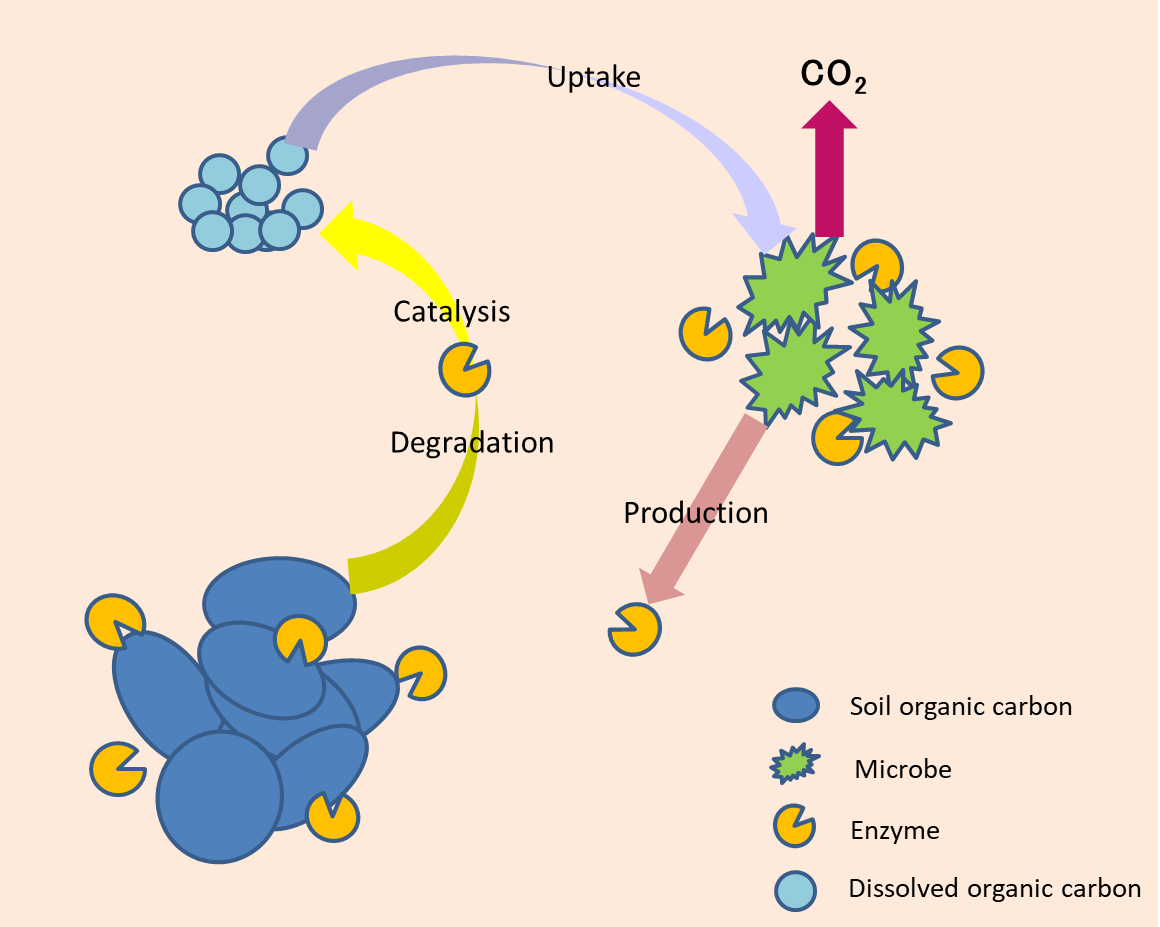Scientists Develop a Model to Simulate Microbial Decomposition of Soil Organic Carbon
Date:2022-02-09
Soil is the largest pool of terrestrial organic carbon. Microbial decomposition of soil organic carbon (soil heterotrophic respiration) is one of the most important processes in the global carbon cycle. The positive feedback between soil heterotrophic respiration and climate system is expected to exacerbate the future global warming. In the fifth and sixth phases of the Coupled Model Intercomparison Project (CMIP), there was a large uncertainty in the magnitude of this positive feedback modelled by Earth system models (ESMs). Many studies have attributed the large uncertainty partly to the difference in modelled soil heterotrophic respiration by conventional first-order soil organic carbon (SOC) decomposition models in ESMs.
"Microbes play critical roles in the global carbon cycle by controlling SOC decomposition." Said associate Prof. ZHANG Xia from the Institute of Atmospheric Physics of the Chinese Academy of Sciences. "In land surface models (LSMs) as one of the important components of ESMs, explicitly representing the soil microbial processes would improve the simulation of soil heterotrophic respiration responses to environmental changes."

Schematic diagram of MESDM representing the processes of microbial degradation of soil organic carbon into dissolved organic carbon through catalysis of extracellular enzyme, which is produced by microbes, microbial uptake of dissolved organic carbon, and respiration. (Image by ZHANG Xia)
ZHANG and her collaborators in China and the USA developed a microbial-explicit SOC decomposition model (MESDM), representing microbial processes and physiological transition between active and dormant states. MESDM was incorporated into the Noah-MP LSM. They tested the coupled model against field measurements at a semiarid grassland site.
"The coupled model with MESDM can reproduce the observed soil respiration pulses in response to rain pulses during monsoon and non-increase in microbial respiration rate with the high temperatures during the hot premonition droughts. Thus it improves the simulation of net ecosystem exchange." ZHANG explained. "Our study helps improve the understanding of the interactions between climate changes and land carbon cycle."
This study has been published in Journal of Advances in Modeling Earth Systems.
Citation: Zhang, X., Xie, Z., Ma, Z., Barron-Gafford, G. A., Scott, R. L., & Niu, G.-Y. (2022). A microbial-explicit soil organic carbon decomposition model (MESDM): Development and testing at a semiarid grassland site. Journal of Advances in Modeling Earth Systems,14, e2021MS002485. https://doi.org/10.1029/2021MS002485
Media contact: Ms. LIN Zheng, jennylin@mail.iap.ac.cn
